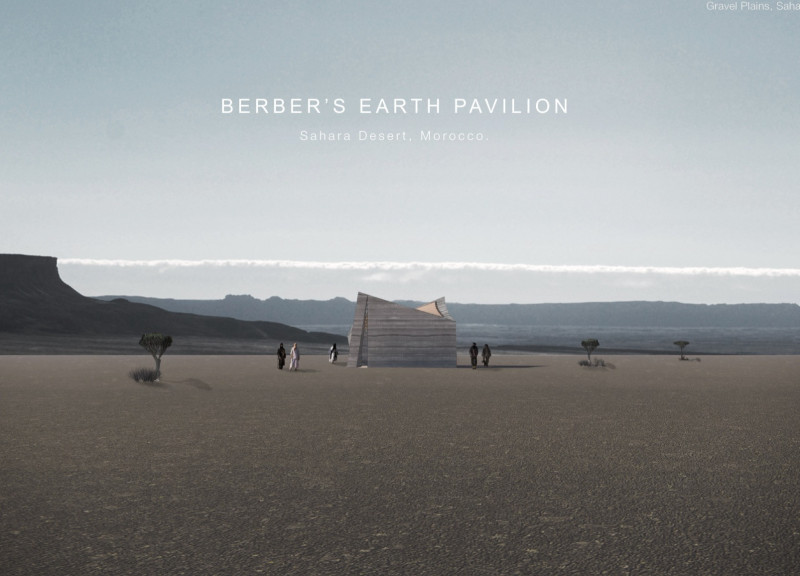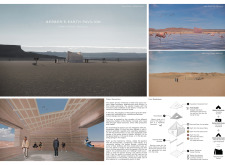5 key facts about this project
The Berber's Earth Pavilion is situated in the Sahara Desert in Morocco, designed to meet the challenges of its unique environment. It functions as a space for shelter and reflection, drawing from the architectural traditions of Berber nomads, which prioritize adaptability and connection to nature. The design concept balances contemporary architecture with traditional practices, creating a meaningful interpretation of cultural heritage.
Architectural Form
The pavilion features a hyperbolic paraboloid structure, which helps it blend with the surrounding dunes. This shape not only provides stability but also encourages a visual relationship with the desert landscape. The design emphasizes both function and appearance, promoting a sense of harmony between the building and its natural context.
Materiality
Rammed earth serves as the main material, anchoring the pavilion to its geographical surroundings while offering durability for the desert climate. This choice of material helps regulate interior temperatures, acting as a thermal buffer. Using rammed earth also respects local building traditions, reinforcing a connection to the past while addressing modern needs.
Structural Elements
Wood is used for the beams, providing necessary support while enhancing the overall aesthetic of the pavilion. Sourced from the local area, the wood complements the earth material and strengthens the connection between the building and its environment. The combination of these materials creates a tactile experience for visitors, inviting them to engage with both the structure and the landscape.
Design Features
Natural openings are strategically placed to allow light and air to flow through the pavilion. These features encourage visitors to actively interact with their surroundings. A skylight integrated into the roof design facilitates stargazing, enhancing the pavilion's function and deepening the connection to the vast desert sky.
Attention to detail in the pavilion’s construction illustrates an understanding of both cultural heritage and environmental context, resulting in a thoughtful space that reflects the traditions of the Berber people while embracing contemporary architectural ideas.



















































